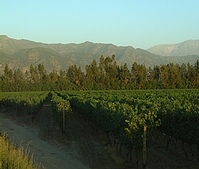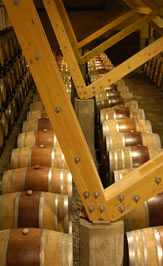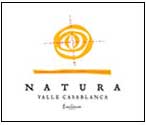Doing business the "green way" is considered responsible today, as both the business community and the consumer look for ways to protect the environment, make a profit, and come out at the end of the process with an enjoyable product. The idea hasn’t been lost on grape growers and wineries.
Once the only way to farm, practiced by a small group of naturalists, organic and biodynamic grape growing is now entering the mainstream. Sustainable practices in the vineyard are now almost commonplace around the world, and a growing number of grape farmers–with the encouragement of wineries–are moving toward organic and even biodynamic grape culture. Nowhere is this more evident than at the sustainable winery Emiliana in Chile.
commonplace around the world, and a growing number of grape farmers–with the encouragement of wineries–are moving toward organic and even biodynamic grape culture. Nowhere is this more evident than at the sustainable winery Emiliana in Chile.
Founded in 1986 by the Guilisasti family, Emiliana is dedicated to producing their “Natura” and “Novis” lines of wines from organically-grown grapes and “G” and “Coyam” super-premium wines from grapes grown in accordance with biodynamic principals.
In the late 1990s consulting winemaker Alvaro Espinoza introduced organic and biodynamic concepts into Chile, and a few years later he convinced the Guilisastis to embrace the concepts and to hire a sympathetic winemaker. In 2006 the Guilisastis appointed Antonio Bravo as lead winemaker for Emiliana, but Bravo was not a big fan of organic or biodynamic grape farming. “I was a firm believer in  conventional viticulture and the use of agrochemicals to solve problems in the vineyard. But when I saw how healthy organic and biodynamic grapes were, I became a believer.”
conventional viticulture and the use of agrochemicals to solve problems in the vineyard. But when I saw how healthy organic and biodynamic grapes were, I became a believer.”
So, with Espinoza and Bravo on board as the winemakers, the Guilisastis forged ahead with an ambitious program called Emiliana Organico. Of course, they could have limited the farming practices on the 2,800 acres of vineyards they own in the regions of Maipo, Colchagua, Casablanca, Bio-Bio and Limari to sustainable farming coupled with integrated production, a sort of “green” symbiotic relationship that essentially defines the “how” of applying agrochemicals only when absolutely necessary.
Instead, the Guilisastis opted to go organic for some of their vineyards and biodynamic for a smaller portion. To be certified organic, a grower must not use synthetic pesticides, herbicides, fungicides, fining agents or genetically modified organisms. Growers who practice biodynamics follow the moon calendar and use homeopathic concepts and grapes that are grown inside a closed system.
At a meeting with Bravo earlier this month, we tasted through the entry-level Natura line, priced at $11, as well as the limited selection Novas line, priced at $17 (except for the Sauvignon Blancs, which are not brought into the United States by Banfi Vintners, importers of Emiliana wines). In general, I liked the red wines more than the whites. I’ve always believed that if something was out of the ordinary with organic or biodynamic grapes, the problem would show up more in white wines than reds. Both the Natura and Novas Chardonnays lacked varietal character and smelled a little like native North American grapes such as Catawba and Delaware. The Natura Carmenère and the Novas Carmenère/ Cabernet Sauvignon were loaded with clearly defined varietal fruit, good acidity and nicely integrated refined tannins.
Carmenère/ Cabernet Sauvignon were loaded with clearly defined varietal fruit, good acidity and nicely integrated refined tannins.
The two Emiliana wines made from biodynamic-grown grapes, Coyam, priced at $30 and G, priced at $90, were both nicely structured and packed with fruit, showing good length and complexity–as well as high alcohol in the international stylistic mold. These multi-varietal blends from the Los Robles Vineyard in the Rapel Valley reflect strong winemaking and will likely prove quite popular among those inclined toward wines crafted in this style.
6
